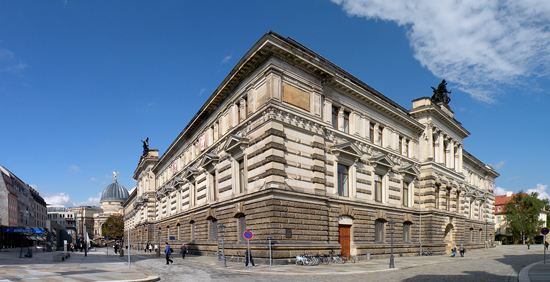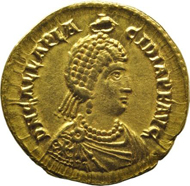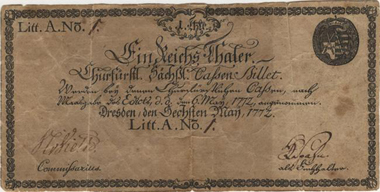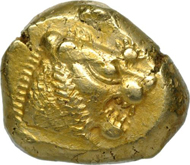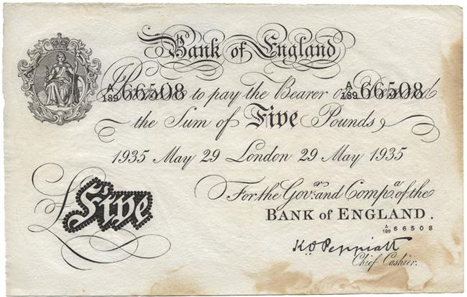June 18, 2015 – One of the internationally most important universal collections of coins and medals has returned to its origin. Since 6 June visitors can see Dresden’s coin collection in the Georgenbau of the Dresden Residenzschloss.
Since the end of WWII the Dresden Albertinum had housed the coin cabinet. Photograph: Vitold Muratov / https://creativecommons.org/licenses/by-sa/3.0/deed.de
Since the end of WWII only a small permanent exhibition represented the coin cabinet in the so-called Albertinum Museum. During the last 10 years the museum has even been restricted to smaller temporary exhibitions.
View at the exhibition.
Now the coin cabinet is presented as a treasure vault in the Dresden Residenzschloss.
View at the exhibition.
In the second floor of the Georgenbau the collection is represented by a museum of its own with a permanent display of 3,350 objects on 350 square metres in four rooms. A further room is designed to host special exhibitions.
Lucas Cranach the Elder, Portrait of George the Bearded, Duke of Saxony, c. 1534.
The coin cabinet was founded by George the Bearded (1500-1539). At the epoch it was housed in the Georgenbau, a part of the Residenzschlosses where it has now eventually returned to.
Western Roman Empire, Empress Galla Placidia (421-450), Solidus, Ravenna mint, gold, diam. 21.5 mm, 4.41 g. © Münzkabinett, Staatliche Kunstsammlungen Dresden, Photograph: Jens Dornheim.
Objects in the Dresden coin cabinet range from antiquity until today. The cabinet has grown over nearly five centuries up to over 300,000 objects comprising not only coins and medals but also orders and decorations, banknotes, historical security papers, dies of coins and medals, signets, models, premonetary means of payment, and coin-producing machines and instruments. And, of course, the world’s largest collection of coins and medals from Saxony.
Electorate of Saxony, Reichstaler 1772, 180.0 x 89.5 mm.
In the first cabinet room the permanent exhibition starts with ‘Mining and minting in Saxony’ where the 900 years history of coins in the region of Saxony and Meißen is explained.
Lydia, King Alyattes, 1/3 stater (trite), c.600 BC, Sardes mint, electrum, diam. 13.5 mm.
The next room is dedicated to the ‘cosmos of money’: the development of money from antiquity to modern times.
Hans Reinhart the Elder: Trinity medal, 1544, silver, diam. 103.2 mm, © Münzkabinett. Staatliche Kunstsammlungen Dresden, Photograph: Roger Paul.
In the ‘medals and orders’ room the focus lies on the development of the medal art from Renaissance time to today. To Orders and decoration medals a special section has been dedicated here, too.
In the Elbsaal room eight different topics ‘Around money’ are presented in a showcase each breaking deliberately with the chronological order in the other rooms.
Operation Bernhard: imitation of a British 5 pound 1935 Bank of England banknote made in Germany during WWII, 133.0 x 210.0 mm.
Here visitors learn about coins and metals, curious shapes of money or inventive names of money. Under the title ‘From the thaler to the dollar’ the triumph of the world’s most prominent and half a millenium old currency is vividly presented.
You can find more information on the coin cabinet on the official website of the museum.
And you can read more about the challenge before the inauguration and the visit of the G7 Finance Ministers here.




